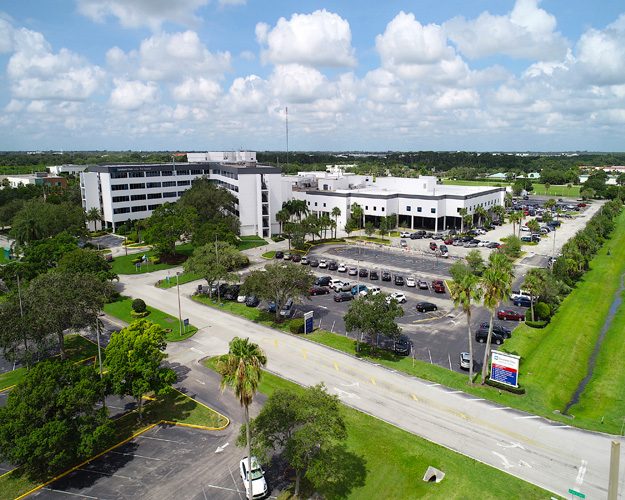The number of new COVID-19 infections locally dropped by one third this past week, according to the Centers for Disease Control and Prevention, bringing the weekly case count to its lowest level in five months.
The CDC’s Covid Data Tracker reported that 118 Indian River County residents tested positive for COVID-19 via labs that report to the Florida Department of Health in the week ending Sept. 15. This does not include people who used at-home kits and experienced mild cases not requiring a visit to the doctor.
New infections rose after the Labor Day holiday weekend, but the latest numbers track closely with the 127 new weekly cases reported for the week ending Sept. 1.
For the first time since the spring, Indian River County’s weekly case positivity rate fell below 10 percent, according to the CDC’s Covid Data Tracker. That statistic had soared into the high 20s last winter and held in the high teens most of the summer.
The number of people hospitalized with COVID-19 also dropped last week from 13 to 11, and the count of patients in the county’s largest hospital as of press time Monday had declined 20 percent from the same time last week.
“There are eight COVID positive patients in-house this morning; one is in ICU,” Cleveland Clinic Indian River Hospital spokesperson Arlene Allen-Mitchell said on Monday.
Based upon the CDC’s reporting and the low number of hospitalizations compared to staffed hospital bed capacity, Indian River County is again in the Low Covid Community Level category.
Five more Indian River County residents have died with COVID-19 so far in September, bringing the local death toll to 717 since the start of the pandemic.
As autumn officially began this week, there’s been no sign here of the predicted fall surge in COVID-19 infections due to the circulation of the highly transmissible BA.4 and BA.4.6 subvariants of the Omicron mutation.
COVID hot spots are scattered and isolated, the number of new infections are declining in most parts of the U.S. and hospitalizations are easing nationwide as well, reducing the public’s motivation to get vaccinated. On the most recent Florida Department of Health report, only 15 Indian River County residents received a COVID-19 vaccine shot during the week ending Sept. 8.
In populous northern cities like Boston which could be hit hard with a COVID-19 surge during the winter when freezing temperatures drive residents into enclosed indoor spaces, public health officials are offering incentives like gift cards for people who get the jab.
Newly formulated Pfizer BioNTech and Moderna covid booster shots targeted at Omicron subvariants are widely available in the Vero Beach area. For most people who are eligible to get that booster, public health officials recommend pairing the latest covid shot with an influenza shot at the same appointment.
A recent CDC study suggests that 8 to 11 percent of people experience slightly worse side effects like fatigue, headache, fever and soreness when the two shots are taken together, but the symptoms resolve quickly.
The CDC says anyone concerned about receiving both shots on the same day should consult his or her own physician. The best time to get the flu shot for full-season protection is before the end of October, so there is still time to space out the covid booster and flu shot by two or three weeks for those who would rather monitor side effects from each shot.
While the Omicron-targeted booster rollout seems to have gone rather smoothly, there continues to be very public disagreement among medical experts worldwide on the origins of the COVID-19 virus.
The Lancet, the world’s oldest and most widely read, peer-reviewed medical journal, established a COVID-19 Commission to study various aspects of the pandemic and that commission’s report, a well as public statements of the commission’s leadership, has caused a stir in the public health community.
The commission faults the World Health Organization for delaying its declaration of a Public Health Emergency of International Concern, and calls for an independent inquiry into the origins of the COVID-19 virus.
The WHO lashed out at the Lancet commission’s report, publishing a statement defending the WHO’s actions, as well as calls to strengthen the WHO, and future steps.
“WHO continues to actively pursue the search for the origins of SARS-CoV-2, with July 2021 marking the establishment of a permanent international Scientific Advisory Group for Origins of Novel Pathogens, or SAGO, which covers both SARS-CoV-2 and future new pathogens,” the statement concluded.
Research continues into therapeutics for COVID-19 illness, and into what might already exist in the pharmaceutical toolbox that could be used off-label to prevent or treat COVID-19.
A study of a vaccine developed in the 1930s to combat Yellow Fever has shown promise in protecting test subjects from both COVID-19 infection and from Yellow Fever. Scientists think this decades-old vaccine could be useful in parts of the world like Central America, South America and Africa – places that still have limited access to costly COVID-19 vaccines.

